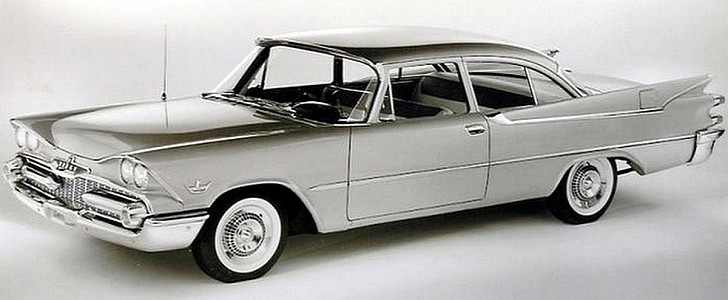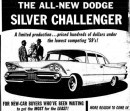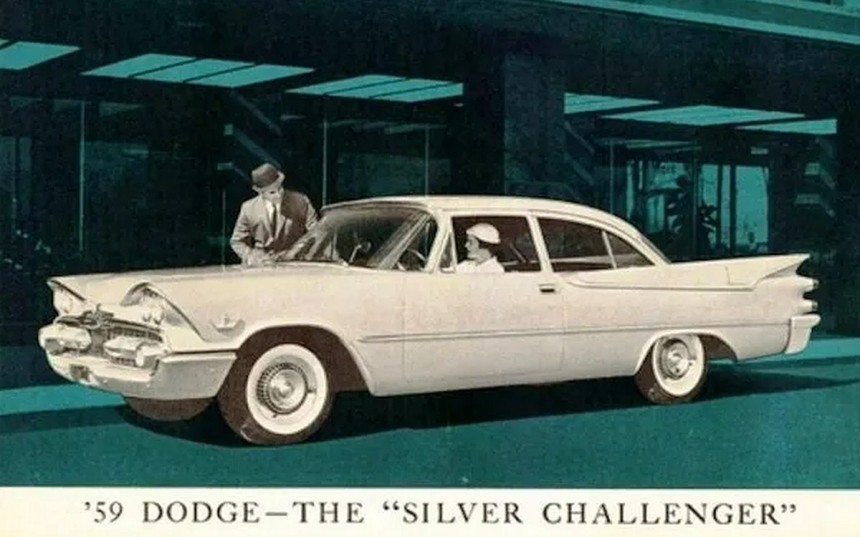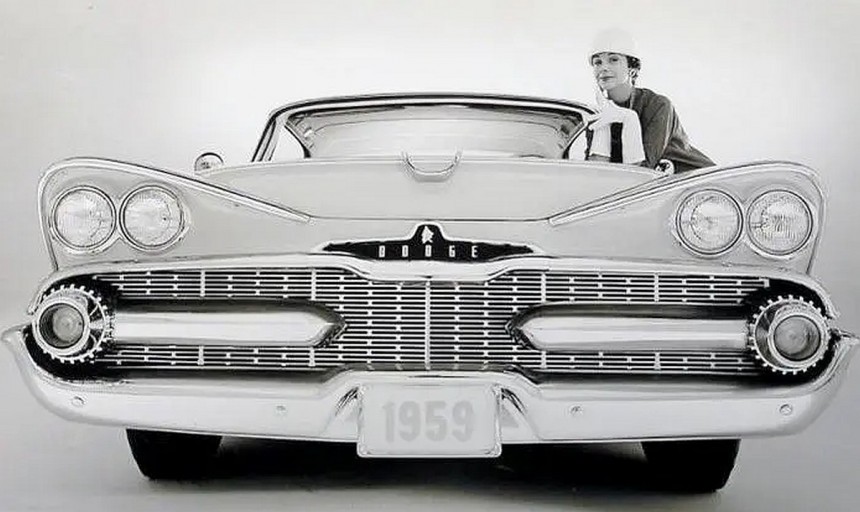For most enthusiasts, the Dodge Challenger story begins in the fall of 1969, when Chrysler introduced the first-generation muscle car for the 1970 model year. But Dodge actually used the nameplate a decade earlier for a limited-edition Coronet.
The Dodge Challenger is arguably one of the most iconic muscle cars of the golden era. Based on the Plymouth Barracuda, it was the company's first foray into the pony car market. But even though Dodge was a bit late to the party, the Challenger made quite an impression.
Both stylish and sporty on the outside, the first-generation Challenger was also one of the fastest and most powerful muscle cars available at the time. That's because Dodge offered it with both the 440-cubic-inch (7.2-liter) RB V8 and the 426-cubic-inch (7.0-liter) HEMI.
The fun didn't last long, though. As the rising insurance costs plus the 1973 oil crisis hit the U.S. car market, Dodge pulled the plug on the Challenger after the 1974 model year. The nameplate was revived for a second generation from 1978 to 1983, but it was nothing more than a rebadged variant of the Mitsubishi Galant coupe with four-cylinder power.
Unlike some iconic nameplates from the 1970s, the Challenger returned in the modern era. Revived for the second time in 2008, it came back into dealerships with proper power and a design heavily inspired by the 1970 version.
And while it soldiered on into 2022 with minor changes inside and out, the third-gen Challenger spawned some of the meanest muscle cars ever built. Yes, I'm talking about the SRT Hellcat and SRT Demon, rated at more than 700 and 800 horsepower, respectively.
But the story of the Challenger actually began in 1959 with a completely different product. It was called the Silver Challenger, and it was a promotional version of the Dodge Coronet.
Introduced on May 1, 1959, the Silver Challenger was specifically developed to improve sales during the slow summer months. It was offered only as a two-door Club Sedan and came with some optional extras at a lower price.
The package included wall-to-wall black carpeting, silver vinyl upholstery, and black brocade fabric, as well as whitewall tires and full wheel covers. The Silver Challenger was also equipped with the optional swing-out swivel seats, an outside rearview mirror, a push-button AM radio, and electric windshield wipers.
What's more, all cars were finished in a then-new silver paint, hence the Silver Challenger name. And unlike the regular Coronet, the main color could not be combined into a two-tone finish.
The engine lineup included a pair of regular Coronet mills, starting with the 230-cubic-inch (3.8-liter) L-head straight-six, which was rated at 135 horsepower in 1959. But customers were also given the option to go with the 325-cubic-inch (5.3-liter) "Red Ram" V8, which delivered a more exciting 255 horses.
On the flip side, the Silver Challenger was not available with the 383-cubic-inch (6.3-liter), 320-horsepower V8.
Priced at $2,530, the promotional coupe was only a few bucks more expensive than the base Coronet. The latter came in at $2,466 before options. So it was a slightly fancied-up Coronet designed for customers looking for a more bang for the buck. Or, as Dodge's very own ad claimed at the time, it was made for "new-car buyers who've been waiting to get the most for the least."
Unfortunately, the Silver Challenger wasn't as popular as Dodge hoped it would be, and only 352 units were sold before the Coronet was discontinued at the end of 1959.
All told, the Silver Challenger had nothing in common with the Challenger that arrived 10 years later. It wasn't as sleek, it lacked the oomph, and it arrived at a time when Dodge was already preparing to phase out the Coronet nameplate (which eventually returned in 1965).
But it was a cool car nonetheless, one that is quite rare to find nowadays. Sure, it's not exactly desirable either, but it's an interesting bit of Mopar history because it's the first car that wore a "Challenger" badge.
Both stylish and sporty on the outside, the first-generation Challenger was also one of the fastest and most powerful muscle cars available at the time. That's because Dodge offered it with both the 440-cubic-inch (7.2-liter) RB V8 and the 426-cubic-inch (7.0-liter) HEMI.
The fun didn't last long, though. As the rising insurance costs plus the 1973 oil crisis hit the U.S. car market, Dodge pulled the plug on the Challenger after the 1974 model year. The nameplate was revived for a second generation from 1978 to 1983, but it was nothing more than a rebadged variant of the Mitsubishi Galant coupe with four-cylinder power.
Unlike some iconic nameplates from the 1970s, the Challenger returned in the modern era. Revived for the second time in 2008, it came back into dealerships with proper power and a design heavily inspired by the 1970 version.
But the story of the Challenger actually began in 1959 with a completely different product. It was called the Silver Challenger, and it was a promotional version of the Dodge Coronet.
Introduced on May 1, 1959, the Silver Challenger was specifically developed to improve sales during the slow summer months. It was offered only as a two-door Club Sedan and came with some optional extras at a lower price.
The package included wall-to-wall black carpeting, silver vinyl upholstery, and black brocade fabric, as well as whitewall tires and full wheel covers. The Silver Challenger was also equipped with the optional swing-out swivel seats, an outside rearview mirror, a push-button AM radio, and electric windshield wipers.
The engine lineup included a pair of regular Coronet mills, starting with the 230-cubic-inch (3.8-liter) L-head straight-six, which was rated at 135 horsepower in 1959. But customers were also given the option to go with the 325-cubic-inch (5.3-liter) "Red Ram" V8, which delivered a more exciting 255 horses.
On the flip side, the Silver Challenger was not available with the 383-cubic-inch (6.3-liter), 320-horsepower V8.
Priced at $2,530, the promotional coupe was only a few bucks more expensive than the base Coronet. The latter came in at $2,466 before options. So it was a slightly fancied-up Coronet designed for customers looking for a more bang for the buck. Or, as Dodge's very own ad claimed at the time, it was made for "new-car buyers who've been waiting to get the most for the least."
All told, the Silver Challenger had nothing in common with the Challenger that arrived 10 years later. It wasn't as sleek, it lacked the oomph, and it arrived at a time when Dodge was already preparing to phase out the Coronet nameplate (which eventually returned in 1965).
But it was a cool car nonetheless, one that is quite rare to find nowadays. Sure, it's not exactly desirable either, but it's an interesting bit of Mopar history because it's the first car that wore a "Challenger" badge.














